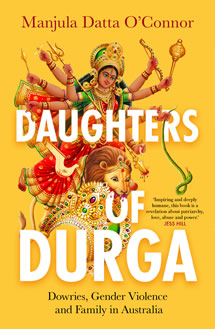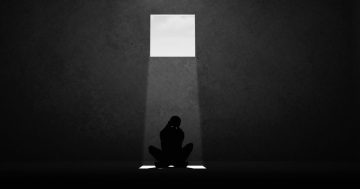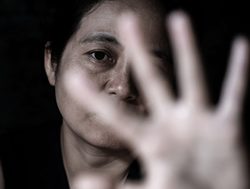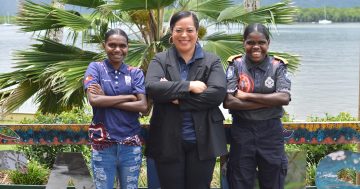Reviewed by Rama Gaind.
By Manjula Datta O’Connor, Melbourne University Press, $34.99.
 Here is a perceptive, though disquieting, investigation of domestic violence in South Asian communities, and the resilience of women in the face of adversity.
Here is a perceptive, though disquieting, investigation of domestic violence in South Asian communities, and the resilience of women in the face of adversity.
It was as a result of a spate of domestic violence-related murders in the Victorian Indian community in the early 2010s that coerced Indian-born clinical psychiatrist Manjula Datta O’Connor to investigate the causes of patriarchal abuse in South Asian families.
Dowries, gender violence and family in Australia. These are enormous and complex issues to explore. This book has a tight scope and is about the lives of migrant victim-survivors of domestic abuse as they presented to Manjula’s clinical psychiatric practice.
“These women reveal to me that while victims of abuse suffer they are not passive; they have strengths, and they use them to survive the unspeakable abuses caused by this crime called family domestic violence.”
The teacher and campaigner has become a one-woman army against the practice of dowry in Australia. Lavish Indian weddings often come at the cost of the bride’s family as a form of dowry ― a system ― in which the family of a girl or woman betrothed to be married will shower gifts upon the family of her intended husband. This is illegal in India, but remains a widespread practice both there and in Australia.
In Daughters of Durga, O’Connor mentions Turkish writer Deniz Kandiyoti, who writes of the “patriarchal bargain” at the heart of traditional Indian culture: “Women suffer at the hands of the patriarchy, yet pray to have sons and will give them preferential treatment over daughters in the hope they will get power back from their association with their son.”
Goddess Durga (literally ‘the Fort’ in Sanskrit) is the mother-protector of the Hindu Universe, the goddess of power. Durga is multi-limbed, and rides atop a lion or tiger so that she may always be ready to battle evil from any direction. Men pray to her and women hope to imbibe her power.
She is one of Hinduism’s major deities; a warrior goddess who is a symbol of motherhood and female strength, as well as power, war and destruction.
“Is the new Indian woman going to be brave and claim her power, like the Goddess Durga, or will she follow the ideal of the submissive, pleasing wife modelled on Sita – the consort of Lord Rama of the epic Ramayana?”
As O’Connor notes, Durga stands, in contrast to Sita, the consort of Lord Rama in Valmiki’s Ramayana, who symbolises submissiveness, obedience and modesty, and who represents the ideal of Indian womanhood.
Written with deep compassion, Manjula proficiently entwines her comprehensive historical and contemporary research of Indian culture, dowry and abuse into a splendid tapestry integrating emotional experiences from her own life and her remarkable work with patients.











